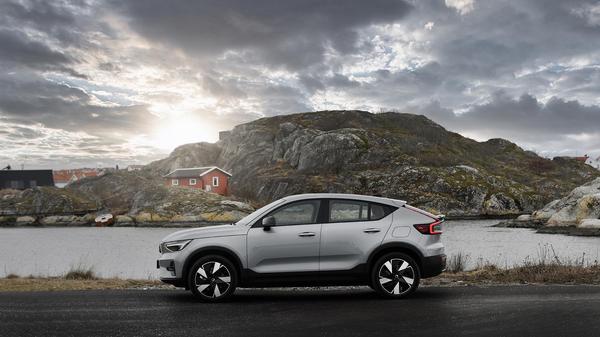Best Of
Electric cars with the best range 2024
If you need an electric car capable of going the distance here’s our pick of the models out there with the best possible range


Words by: Dan Trent
Last updated on 2 February 2024 | 0 min read
Once live with an electric car you quickly realise concerns about range and how long you’ll be standing around waiting to charge soon look a lot less scary. Saying that, range remains a when comparing which electric car to buy. And even if you don’t always need those miles ‘in the tank’ it’s nice to have the reassurance that if you wanted to go the distance the car will too.
Which is why range remains one of the first figures you’ll see manufacturers quote when promoting their electric cars, and why it remains an important comparison when choosing between them. But not the only one. To that end while it may be tempting to think bigger is better when it comes to electric car batteries explained this adds cost and weight, means longer charging times and could see you spending more on electricity, especially when using public chargers. So, have a good think about how much range you need, rather than how much you think you might want! Having said all that if range still is your primary consideration here are some of the cars to take your furthest between charges. A quick disclaimer first – the figures you see here are the official ‘best case’ ones manufacturers publish off the back of independently verified testing, and may be much more optimistic than what your car will actually do out there in the real world. Click here to skip to our explainer at the bottom of the article for more on this!
Which is why range remains one of the first figures you’ll see manufacturers quote when promoting their electric cars, and why it remains an important comparison when choosing between them. But not the only one. To that end while it may be tempting to think bigger is better when it comes to electric car batteries explained this adds cost and weight, means longer charging times and could see you spending more on electricity, especially when using public chargers. So, have a good think about how much range you need, rather than how much you think you might want! Having said all that if range still is your primary consideration here are some of the cars to take your furthest between charges. A quick disclaimer first – the figures you see here are the official ‘best case’ ones manufacturers publish off the back of independently verified testing, and may be much more optimistic than what your car will actually do out there in the real world. Click here to skip to our explainer at the bottom of the article for more on this!
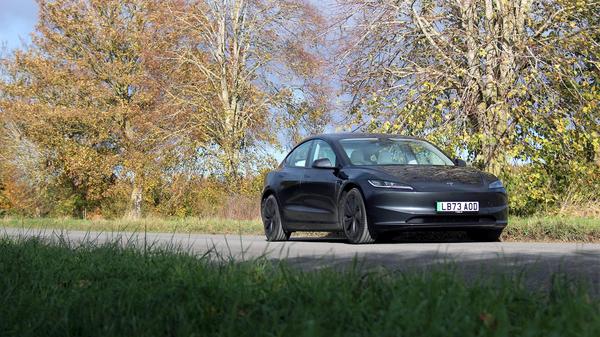
Mercedes-Benz EQS 450+ – 452 miles
There are various tricks you can use to make an electric car go further between charges. A big battery obviously helps, as does reducing the drain on it from running air-con and other comfort features through the use of heat pumps and other efficiency boosting kit. For the EQS saloon Mercedes takes a more dramatic approach, with a fixation on aerodynamic efficiency to make the EQS cut through the air with the minimum of effort. As you’ll see shortly, it’s not the only one taking this approach. But from land-speed record cars in the 30s to wild looking concepts in the 70s Mercedes has a long history of innovation in this field, and it shows with the 452-mile official range of the single-motor EQS 450+. For context the taller, less aerodynamic EQS SUV with the same battery and power output manages just 364 miles by the same official figures, underlining just how effective the saloon’s slippery shape is.
Search for a Mercedes-Benz EQS on Autotrader
Search for a Mercedes-Benz EQS on Autotrader
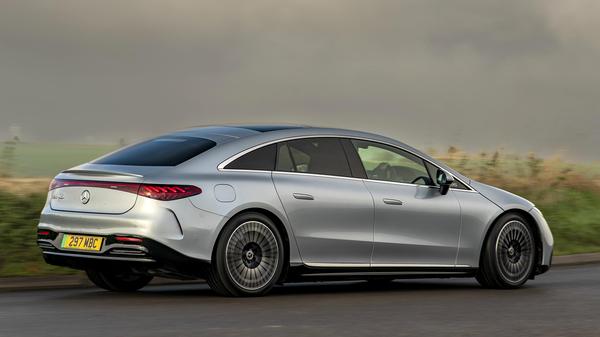
BMW i7 – 384 miles
BMW takes a different approach to arch-rival Mercedes, and rather than build a standalone electric range simply offers battery-powered options for its main models alongside the petrols, diesels and hybrids. And the i7 version of the 7 Series is one of the most impressive, with 384 miles between charges for the all-wheel drive xDrive60 Excellence version. This challenges accepted wisdom somewhat, given it actually goes a fraction further than the less powerful, single motor eDrive50 version while also being significantly more powerful. Win-win.
Search for a BMW i7 on Autotrader
Search for a BMW i7 on Autotrader
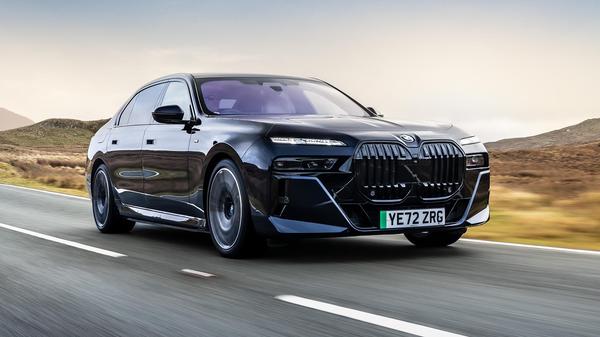
Audi Q8 Sportback e-tron – 343 miles
Based on a shared platform with the combustion and hybrid Q8 models, the original e-tron wasn’t all that impressive in terms of its range or efficiency. Audi’s solution is a relatively crude one – it’s just increased the battery size – but it’s at least tipped the official range over 300 miles, even if you’ll be lucky to get that in reality. Interestingly, the sleeker shape of the Sportback version actually has a functional benefit here, its official 343-mile range comparing favourably with the 330 miles for the regular SUV shape. Audi claims a small reduction in drag for its camera-based ‘virtual’ mirrors as well, but having tried them we’d sacrifice a bit of range for conventional glass ones if it’s all the same!
Read the review for the Audi Q8 e-tron and watch Rory’s video roadtest.
Read the review for the Audi Q8 e-tron and watch Rory’s video roadtest.
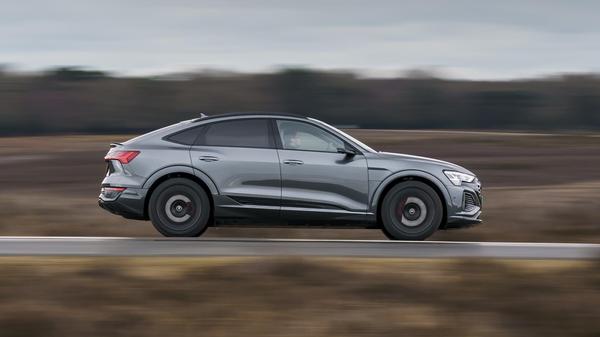
Hyundai Ioniq 6 – 338 miles
Like the Mercedes EQS, the Hyundai Ioniq 6 is designed to cut through the air as cleanly as possible to the benefit of range above all else. The happy by-product being it looks rather cool and distinctive as a result. And it must work, because even with a middling-sized 77kWh battery the Ioniq 6 has an official range of 332 miles, compared with the 315 miles of an equivalent Ioniq 5 built on the same platform. If range is your priority the single-motor, rear-wheel drive version is the one you want. In all cases the Ioniq 6 is one of the fastest-charging cars out there as well, so as well as going a long way between stops you won’t have to plug in for very long when you do.
Search for a Hyundai Ioniq 6 on Autotrader
Search for a Hyundai Ioniq 6 on Autotrader
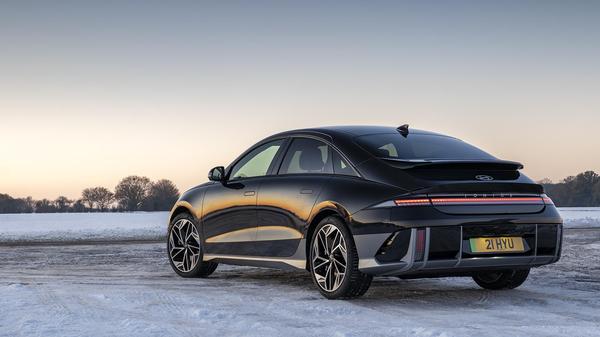
Tesla Model 3 Long Range AWD – 421 miles
Above-average range combined with the fantastic Supercharger network make long-distance driving with a Tesla about as painless as it’s possible to be in an electric car. An official maximum range of well over 400 miles for the Model 3 Long Range AWD is all very impressive on paper as well but, in practice, it means you can get where you want to with a succession of shorter, quicker top-ups at Superchargers, as suggested by the car’s nav. All of which means high-mileage drivers in a hurry can depend on a Tesla to get them to where they need to be without any time wasted.
Search for a Tesla Model 3 on Autotrader
Search for a Tesla Model 3 on Autotrader
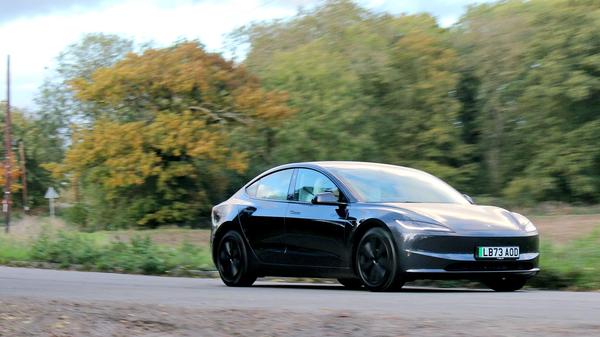
Ford Mustang Mach-E Extended Range RWD – 372 miles
The Mach-E is available in two battery sizes, the Extended Range versions packing a chunky 98kWh over the 72kWh of the standard one. That adds to the cost but means a claimed maximum range the right side of 300 miles if you need the extra. The twin-motor, all-wheel drive version has more power and goes a bit quicker but, with 294 horsepower, the RWD has enough to be going on with, and the 372-mile official range means it’ll go a tad over 30 miles extra on a charge over the AWD. At least by the official claims.
Search for a Ford Mustang Mach-E on Autotrader
Search for a Ford Mustang Mach-E on Autotrader
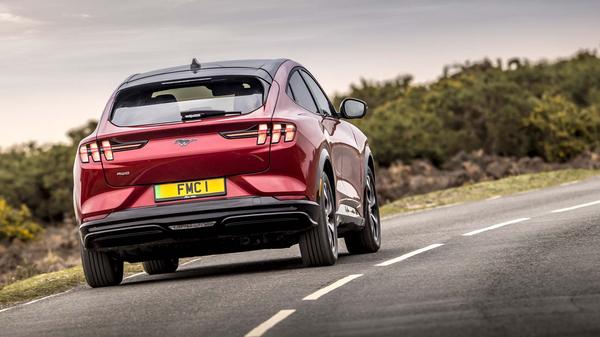
Polestar 2 Long Range Single Motor – 406 miles
Recently updated, we admire Polestar for its clean, fuss-free approach to electrified driving. This comes across in everything, from the look of the car to the clear and logical way it shows the information about the different models of Polestar 2 you can choose from, meaning you can prioritise price, range or performance as required. The latter has increased across the board thanks to improved battery and motor tech, the single-motor rear-wheel drive versions best for range with the Long Range now claiming a fraction over 400 miles, which is more than 50 miles further than you’ll get out of a twin-motor Performance Pack car. The related Volvo XC40 Recharge has had similar upgrades under the skin, and while not quite as good as the Polestar is now a lot more competitive on range than before.
Search for a Polestar 2 on Autotrader
Search for a Polestar 2 on Autotrader
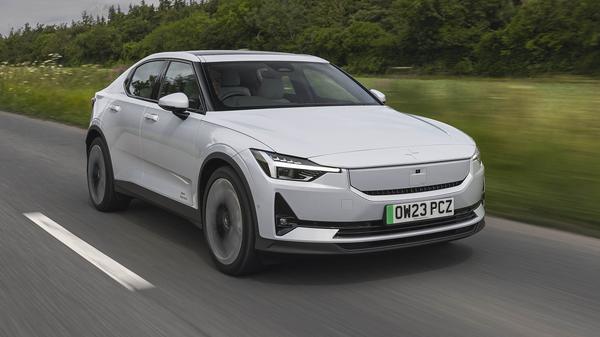
MG4 Extended Range – 323 miles
Although it wears the badge of a classic British brand the MG4 is one of an increasing number of Chinese-engineered electric cars hitting the market. Which is just fine, given the resources and expertise these brands bring. With the biggest of the three battery options available the Extended Range is the only MG4 to claim more than 300 miles, which for the price it sells at is a very attractive proposition. And, for most drivers, a more useful feature than the supercar-chasing acceleration figures of the high-performance XPower version.
Search for an MG4 on Autotrader
Search for an MG4 on Autotrader
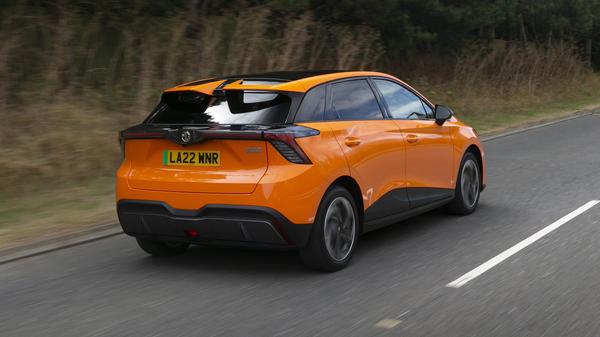
Kia EV9 RWD – 349 miles
Our first drive in Kia’s impressive EV9 was a case study in how driving conditions can slash the real-world range compared with what manufacturers claim. True, it’s a big, heavy seven-seat SUV but thanks to its 99.8kWh battery Kia claims 313 miles for the top of the range twin-motor AWD version we drove. But on fast and flowing Scottish roads in the depths of winter we had to stop for an emergency charge well short of the 200 miles to our destination. True, the terrain and conditions were hardly representative of ‘normal’ driving. But it goes to show. We’ll be testing the more efficient single-motor RWD version soon, and hope this gets closer to the claimed 359 miles Kia says it can theoretically achieve.
Search for a Kia EV9 on Autotrader
Search for a Kia EV9 on Autotrader
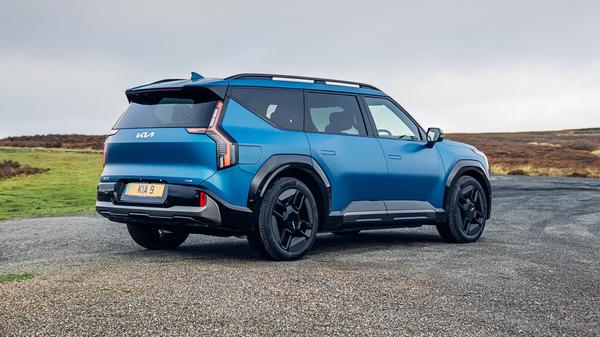
Electric car range – how does it work?>
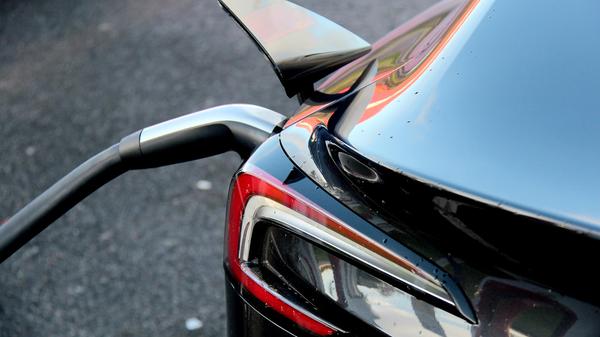
How do I calculate my range?
New technology brings with it a new facts and figures to get your head around. So, let’s break it down. The key stat for figuring out how far a car will go on a full charge is the battery size, usually measured in kilowatt hours, or kWh. You may see manufacturers listing two figures here, the ‘gross’ battery size being its theoretical maximum capacity while the slightly smaller ‘net’ number more accurately reflects what’s available to use.
Manufacturers use various ways to calculate efficiency, which is to say how far each kWh of energy in the battery will get you. For British drivers raised on ‘miles per gallon’ in combustion cars the easiest to get your head round is the equivalent miles per kWh. So, if your car has a 100kWh battery and has efficiency of three miles per kWh your range should, in theory, be 100kWh multiplied by three, or 300 miles. Some cars use the metric measurement of kWh per 100km, while Tesla and others use Wh/mile. Some, but not all, let you choose your units and way of measuring them in the car’s settings so find the one that works best for you, and get ready to dust off those mental arithmetic skills!
Manufacturers use various ways to calculate efficiency, which is to say how far each kWh of energy in the battery will get you. For British drivers raised on ‘miles per gallon’ in combustion cars the easiest to get your head round is the equivalent miles per kWh. So, if your car has a 100kWh battery and has efficiency of three miles per kWh your range should, in theory, be 100kWh multiplied by three, or 300 miles. Some cars use the metric measurement of kWh per 100km, while Tesla and others use Wh/mile. Some, but not all, let you choose your units and way of measuring them in the car’s settings so find the one that works best for you, and get ready to dust off those mental arithmetic skills!
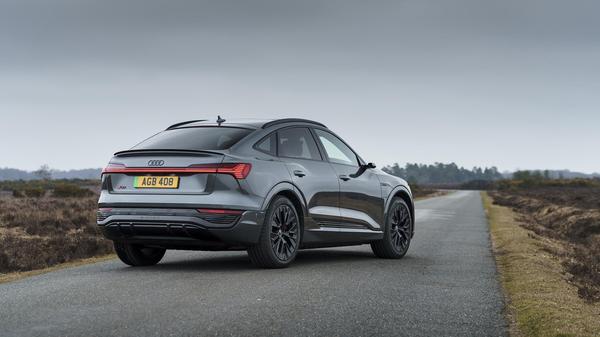
Claimed range versus real-world range
Just like the official mpg figures quoted for combustion cars manufacturers have to declare independently tested range and efficiency stats, usually to what are known as WLTP standards. More on what this means here. The most realistic for like-for-like comparison is the ‘combined’ figure so beware manufacturers listing the ‘urban’ result, which often looks a lot better…
As above, if you know the size of the battery you can then calculate the best-case efficiency figure and compare that to what you get in the real world. It’s unlikely to match those listed by the manufacturer, because those figures are calculated in a laboratory test, not on the road. You also have to accept maximum range is, in some ways, a theoretical number because it’s based on how far the car would go on a full battery driven until the car comes to a stop with a fully discharged battery, which you obviously won’t be doing in real life. This can be frustrating, given the usable, real-world range can sometimes be as little as two thirds of that claimed. The one saving grace is that these official figures are at least measured to the same standard, so you have a sense of the relative performance of different vehicles in these controlled environments.
As above, if you know the size of the battery you can then calculate the best-case efficiency figure and compare that to what you get in the real world. It’s unlikely to match those listed by the manufacturer, because those figures are calculated in a laboratory test, not on the road. You also have to accept maximum range is, in some ways, a theoretical number because it’s based on how far the car would go on a full battery driven until the car comes to a stop with a fully discharged battery, which you obviously won’t be doing in real life. This can be frustrating, given the usable, real-world range can sometimes be as little as two thirds of that claimed. The one saving grace is that these official figures are at least measured to the same standard, so you have a sense of the relative performance of different vehicles in these controlled environments.
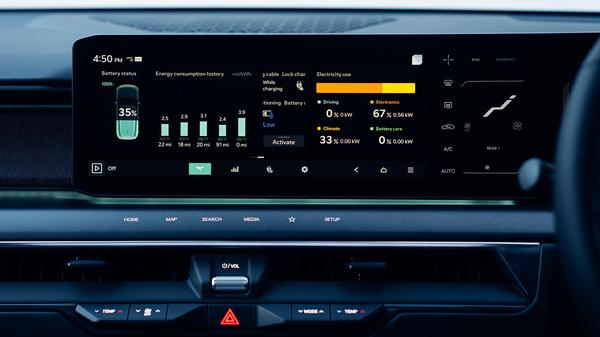
Which models are best for range?
You may see wildly different claimed range figures across otherwise similar looking models in a manufacturer’s line-up, which can be confusing. This can be driven by factors ranging from the size of the battery (you’ll pay more for a bigger one) to whether the model you’re looking at is powered by a single motor or uses a dual-motor, all-wheel drive set-up. Even things like the size of the wheels can have a big impact, bigger wheels sometimes slashing as much as 10 per cent off the claimed range.
Generally lower-slung, saloon or hatchback models are more efficient and better for range than taller crossover or SUV type vehicles though this isn’t always the case. Once you’ve honed your selection it’s worth checking the small print and comparing models in more detail if range is your primary consideration. On the whole single-motor models are more efficient than their heavier, more powerful, performance-oriented twin-motor equivalents, though this isn’t always the case. Other features like heat pumps that may only be available as cost options or offered on higher trim levels can also play a part. Many manufacturer websites let you drill down into the direct comparisons between different models alongside each other, so use this facility where offered and make sure you look at the technical information as well as the more general features. And beware blingy options that may look good but severely impact your range!
Generally lower-slung, saloon or hatchback models are more efficient and better for range than taller crossover or SUV type vehicles though this isn’t always the case. Once you’ve honed your selection it’s worth checking the small print and comparing models in more detail if range is your primary consideration. On the whole single-motor models are more efficient than their heavier, more powerful, performance-oriented twin-motor equivalents, though this isn’t always the case. Other features like heat pumps that may only be available as cost options or offered on higher trim levels can also play a part. Many manufacturer websites let you drill down into the direct comparisons between different models alongside each other, so use this facility where offered and make sure you look at the technical information as well as the more general features. And beware blingy options that may look good but severely impact your range!
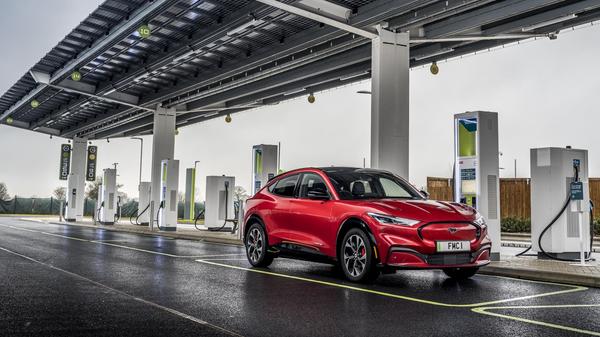
How do I maximise my range?
All sorts of factors can affect how far your electric car will actually go on a full charge, and how close you get to that claimed official range figure. Batteries are quite fussy about temperature, and don’t like ambient conditions that are too hot or too cold. Your car has systems to heat or cool the battery as required, but this takes additional energy. So, weather is a factor, winter having the double whammy of extra demand on the car from running lights, wipers, heating, window demisters and the rest. Going the other way blasting the air-con in the summer heat can also reduce range.
The state of your battery before you start your journey also plays a big part, so where possible leave it plugged in to your home charger (if you’re lucky enough to have one) and pre-set your departure time so the car can ‘pre-condition’ and get the battery up to working temperature using power from the grid rather than wasting range. This can also warm or cool the car according to the ambient temperatures, and can often be controlled remotely from your phone via the car’s app. If you have a regular journey like a commute you can also programme in your usual departure times so your car is warmed through and ready to go before you jump in each morning. With the car up to temperature you’ll get the best efficiency from your battery and also keep the air-con or climate control on without it impacting the range too badly. Back to top
The state of your battery before you start your journey also plays a big part, so where possible leave it plugged in to your home charger (if you’re lucky enough to have one) and pre-set your departure time so the car can ‘pre-condition’ and get the battery up to working temperature using power from the grid rather than wasting range. This can also warm or cool the car according to the ambient temperatures, and can often be controlled remotely from your phone via the car’s app. If you have a regular journey like a commute you can also programme in your usual departure times so your car is warmed through and ready to go before you jump in each morning. With the car up to temperature you’ll get the best efficiency from your battery and also keep the air-con or climate control on without it impacting the range too badly. Back to top
